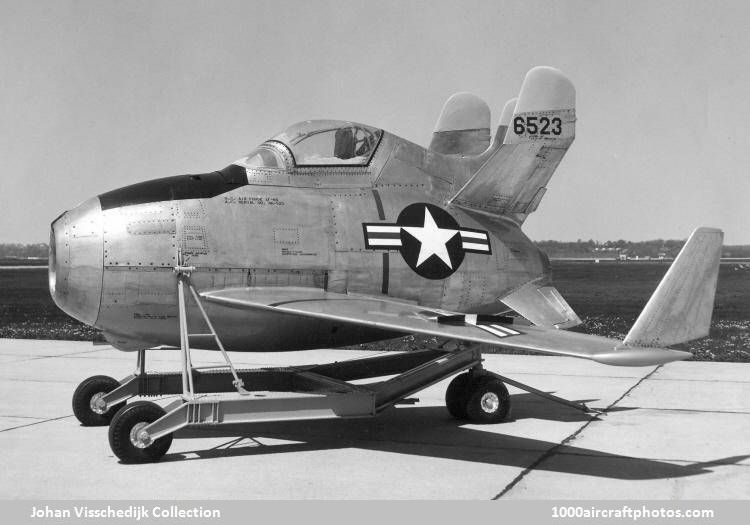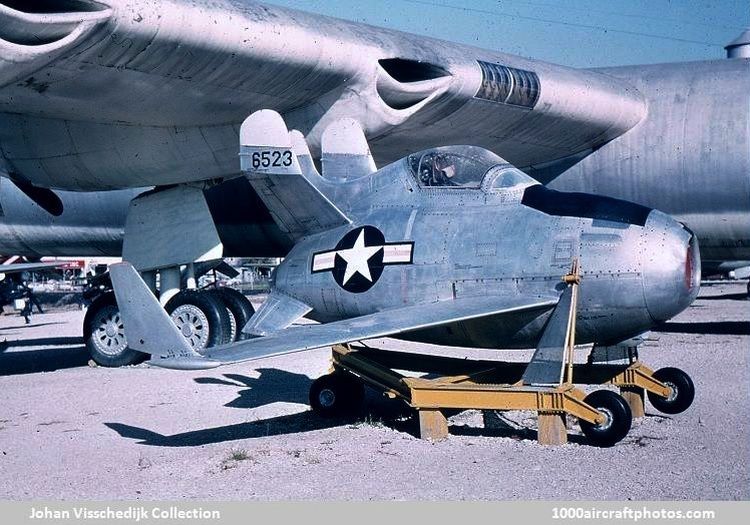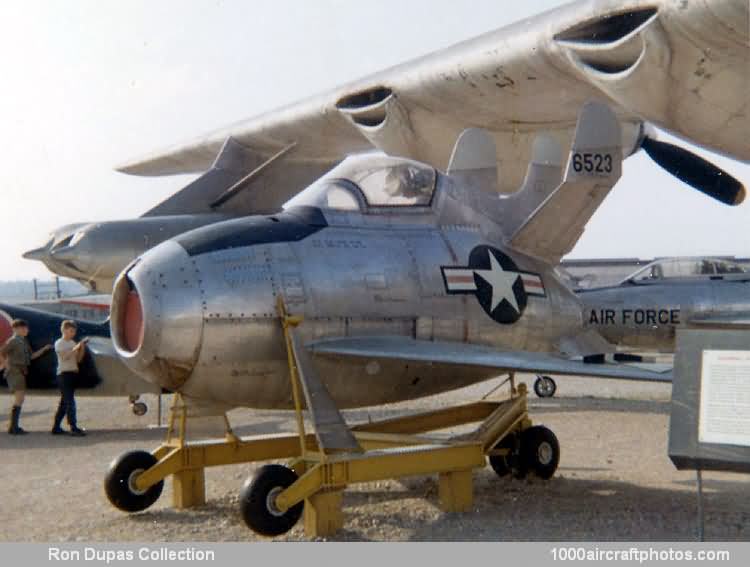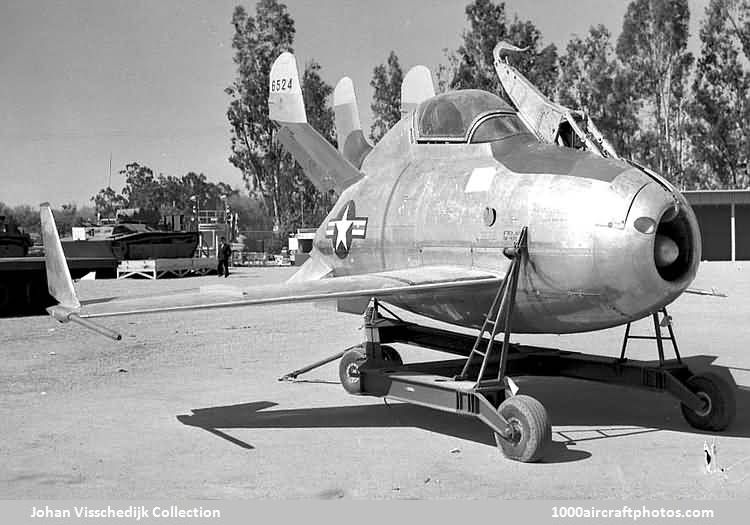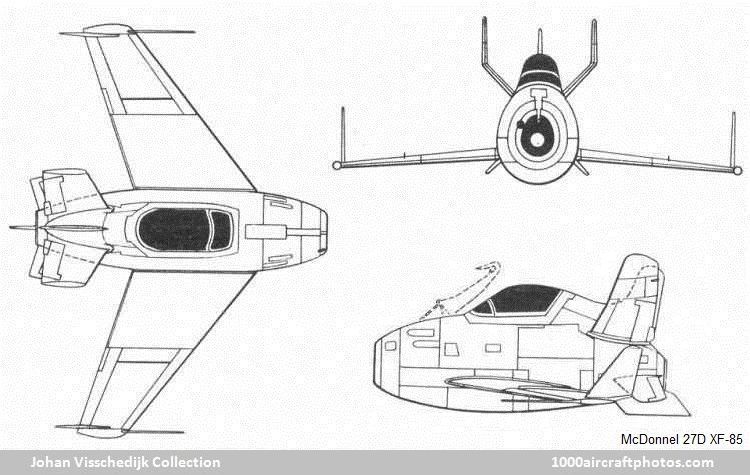08/31/2011. Remarks by Johan Visschedijk: "The XF-85 resurrected the concept of a parasite fighter - an aircraft carried by and launched from a bomber for which it was intended to provide defense. This small jet-propelled interceptor fighter was originally developed as the Model 27 under the leadership of Herman D. Barkley, for use by the Consolidated-Vultee B-36 six-engined long-range bomber and was the subject of a Letter of Intent for two prototypes on October 9, 1945.
The small, egg-shaped XF-85 had vertically-folding wings and triple vertical tail surfaces and was to be carried in the forward bomb-bay of the B-36. The XF-85 was to be launched and picked up by a release and hook-on technique using a retractable trapeze, and therefore the it had a retractable hook forward of the cockpit.
No landing gear was fitted, but for emergency landings it had a retractable steel skid under the fuselage and steel runners under the wing tips. It was intended that while the aircraft was stowed in the bomb-bay of the B-36 it could be re-fuelled and receive radio, radar and mechanical maintenance. Provision was made to jettison the aircraft without pilot in an emergency.
Flight trials were initiated by the second prototype, s/n 46-524, which was powered by a 3,000 lb (1361 kg) st Westinghouse J34-WE-37 turbojet. After five captive flights on the trapeze of a specially-equipped EB-29B Superfortress, the XF-85 was first launched at 20,000 ft (6,100 m) over Muroc (presently Edwards AFB), California, on August 23, 1948.
However, the first attempt to hook on at 26,000 ft (7,625 m) was hampered by rough air. The B-29 trapeze fouled the canopy of the XF-86, smashed the Plexiglas and hit the pilot on the head, knocking off his helmet and oxygen mask. The pilot put the oxygen hose in his mouth and made a successful emergency landing on the Muroc desert. The only damage was a broken wing tip and bent lower fin.
